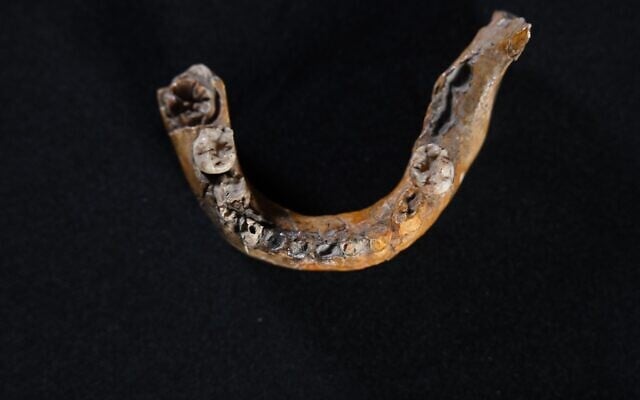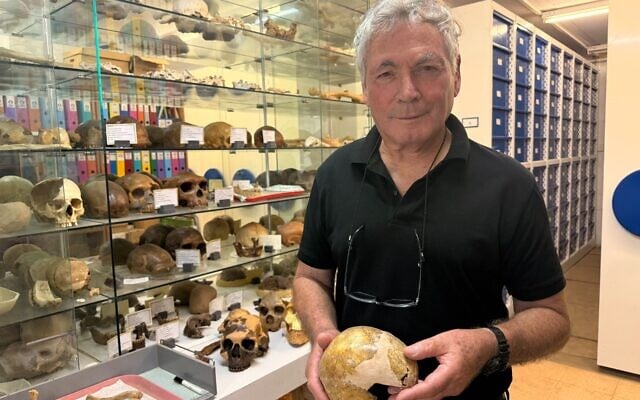A groundbreaking study of a child’s skull found in a northern Israeli cave has found that the world’s first incidence of sex between Homo sapiens and Neanderthals took place at least 100,000 years before scientists previously thought.
Research teams from Tel Aviv University and the French National Center for Scientific Research applied new research techniques to the 140,000-year-old skull of a five-year-old child discovered 90 years ago in the Skhul Cave on Mount Carmel, in northern Israel.
They discovered that the skull — initially thought to belong to a Homo sapiens child — bore physical characteristics of both Homo sapiens and Neanderthals.
Until that point, the earliest evidence of such morphological mingling anywhere in the world was found in a skull dated to some 40,000 years in a Romanian cave.
Genetic analysis had also suggested interaction for a short period between 40,000 and 50,000 years ago.
The new study was led by Prof. Israel Hershkovitz of the Gray Faculty of Medical and Health Sciences at Tel Aviv University and Anne Dambricourt-Malassé of the French National Centre for Scientific Research.
The skull of the so-called Skhul I child shows cranial curvature typical of Homo sapiens. (Tel Aviv University)
It involved scanning the skull and jaw using micro-CT technology at the Shmunis Family Anthropology Institute at Tel Aviv University.
This created an accurate three-dimensional model from the scans and enabled the researchers to perform a complex morphological analysis of the anatomical structures (including non-visible structures such as the inner ear) and compare them to various hominid populations.
To study the structure of the blood vessels surrounding the brain, they also created an accurate 3D reconstruction of the inside of the skull.

The lower jaw of Skhul I child showing features characteristics of Neanderthals. (Tel Aviv University)
“The fossil we studied [provides] the earliest known physical evidence of mating between Neanderthals and Homo sapiens,” said Hershkovitz, explaining that “the child’s skull, which in its overall shape resembles that of Homo sapiens — especially in the curvature of the skull vault — has an intracranial blood supply system, a lower jaw, and an inner ear structure typical of Neanderthals.”
He added, “Traditionally, anthropologists have attributed the fossils discovered in the Skhul Cave, along with fossils from the Qafzeh Cave near Nazareth, to an early group of Homo sapiens. The current study reveals that at least some of the fossils from the Skhul Cave are the result of continuous genetic infiltration from the local, and older, Neanderthal population into the Homo sapiens population.”

Prof. Israel Hershkovitz. (Tel Aviv University
Hershkovitz believes that contrary to previous assumptions, it was the earliest waves of Homo sapiens who interbred with Neanderthals already living in the area after leaving Africa and entering the land bridge Israel provided to Europe.
In a phone conversation with The Times of Israel, he elaborated that according to his previous research on fossils from various Israeli caves, Neanderthals arrived in the Land of Israel some 400,000 years ago and were still in the area 50,000 years ago.
It was some 200,000 years ago that Homo sapiens arrived in the Land of Israel from Africa, he went on. From that point, the two “sister populations” (who belong to the same species) would likely have mixed, exchanging technology and hunting techniques. The new findings confirmed they were interbreeding from as early as 140,000 years ago.
Given the lack of evidence of violent encounters, Hershkovitz said he believed that the Neanderthals, who went globally extinct 40,000 years ago, were not overpowered by Homo sapiens, but were absorbed into them, gradually diminishing as a distinct population. Today’s human genes still carry traces of Neanderthal origins, he noted.
The findings of the latest discovery were published in the journal L’Anthropologie.

